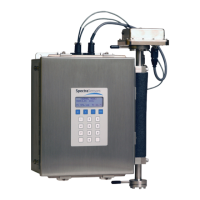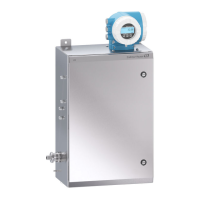Introduction
Hardware Installation and Maintenance Manual 1
–5
How the Analyzers Work
The SS500e/SS2000e/SS3000e analyzers employ tunable diode laser
absorption spectroscopy (TDLAS) to detect the presence of trace substances in
process gases. Absorption spectroscopy is a widely used technique for sensitive
trace species detection. Because the measurement is made in the volume of
the gas, the response is much faster, more accurate and significantly more
reliable than traditional surface-based sensors that are subject to surface
contamination.
In its simplest form, a diode laser absorption spectrometer typically consists of
a sample cell with a mirror at one end, and a mirror or window at the opposite
end, through which the laser beam can pass. Refer to Figure 1–1. The laser
beam enters the cell and reflects off the mirror(s) making one or more trips
through the sample gas and eventually exiting the cell where the remaining
beam intensity is measured by a detector. With the SS500e/SS2000e/SS3000e
analyzers, sample gas flows continuously through the sample cell ensuring that
the sample is always representative of the flow in the main pipe.
Due to their inherent structure, the molecules in the sample gas each have
characteristic natural frequencies (or resonances). When the output of the
laser is tuned to one of those natural frequencies, the molecules with that
particular resonance will absorb energy from the incident beam. That is, as the
beam of incident intensity, I
0
(), passes through the sample, attenuation occurs
via absorption by the trace gas with absorption cross section (). According
to the Beer-Lambert absorption law, the intensity remaining, I(), as measured
OPTICAL HEAD
DETECTOR
WINDOW
INLET
FAR MIRROR
TEC
LASER
OUTLET
PRESSURE SENSOR
Figure 1–1 Schematic of a typical laser diode
absorption spectrometer

